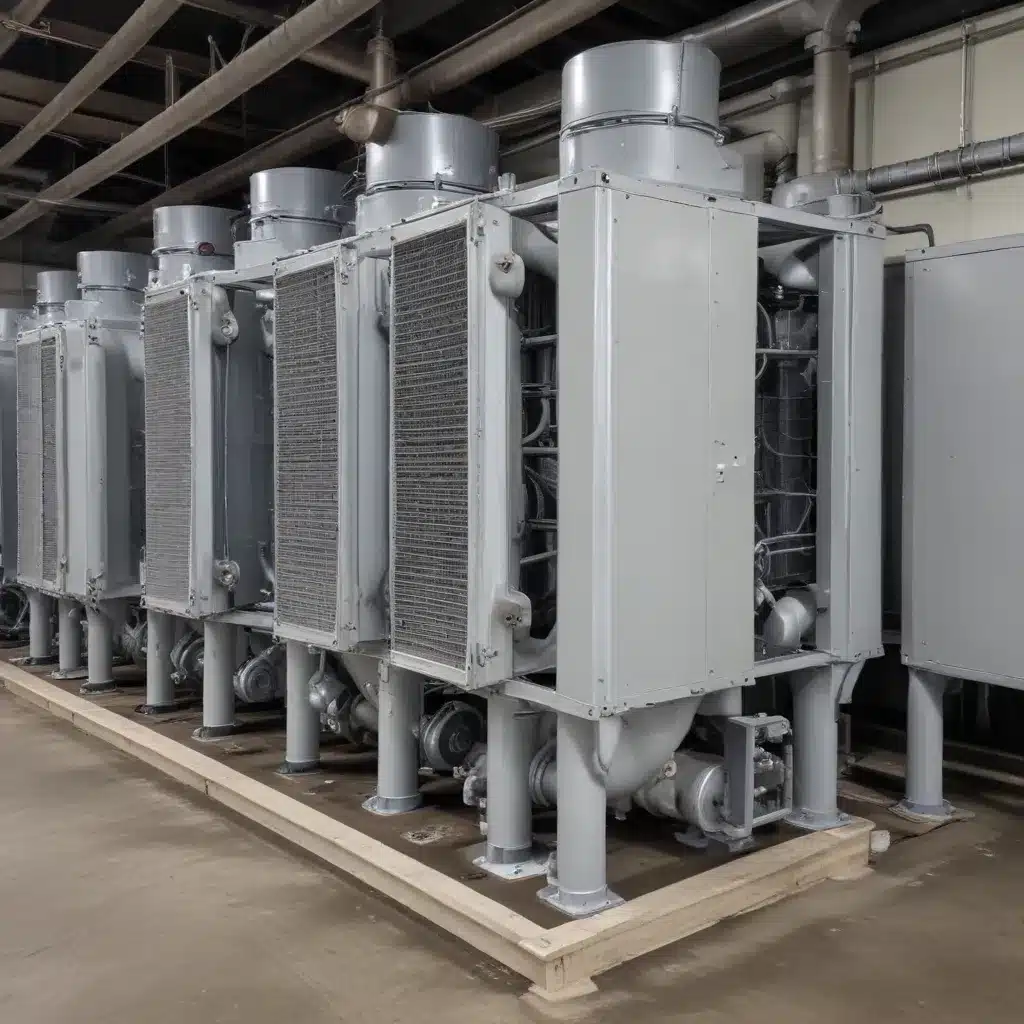
As a seasoned expert in air-cooled heat exchangers, I’m excited to share practical insights and in-depth strategies for retrofitting these essential components to boost energy efficiency. In today’s rapidly evolving industrial landscape, where energy costs and sustainability concerns are paramount, optimizing the performance of air-cooled heat exchangers has become a crucial priority.
Identifying Retrofit Opportunities
The first step in enhancing the energy efficiency of air-cooled heat exchangers is to thoroughly assess the existing system. Carefully examine factors such as:
- Tube and fin design: Outdated or suboptimal tube and fin configurations can significantly impact heat transfer and airflow dynamics, leading to reduced efficiency.
- Fan performance: Older fans or improperly sized units can contribute to excessive energy consumption and inadequate cooling capacity.
- Fouling and corrosion: Buildup of contaminants on the heat transfer surfaces and deterioration of materials can degrade heat exchanger performance over time.
- Control systems: Inefficient or outdated control strategies may result in the heat exchanger operating outside of its optimal performance envelope.
By conducting a comprehensive evaluation of these key components, you can identify the most promising opportunities for targeted retrofits that will deliver tangible energy savings.
Implementing Heat Transfer Enhancement Techniques
One of the most effective strategies for improving the energy efficiency of air-cooled heat exchangers is the incorporation of heat transfer enhancement technologies. These innovative solutions can significantly boost the thermal performance of the heat exchanger without requiring major structural modifications or extensive downtime.
Twisted Tape Inserts
Twisted tape inserts, such as hiTRAN Thermal Systems, are a well-established and widely used heat transfer enhancement technology. These devices disrupt the boundary layer within the heat exchanger tubes, creating turbulence and swirling flow patterns that enhance heat transfer. By installing twisted tape inserts, you can often achieve double-digit increases in heat transfer performance, leading to a smaller heat exchanger footprint or reduced energy consumption.
Finned Tube Optimization
Another approach to enhancing air-cooled heat exchanger efficiency is the optimization of the finned tube design. Advanced simulation and modeling techniques, such as computational fluid dynamics (CFD), can help identify opportunities to improve fin geometry, spacing, and material selection to enhance airflow and heat transfer. By carefully analyzing the existing finned tube configuration and implementing targeted modifications, you can unlock significant efficiency gains.
Fouling Mitigation Strategies
Fouling is a common challenge in air-cooled heat exchangers, leading to a gradual decline in performance over time. Implementing fouling mitigation strategies can be a game-changer in improving energy efficiency. This may involve the use of enhanced tube inserts that create higher shear forces, effectively dislodging and removing contaminants from the heat transfer surfaces. Additionally, the strategic placement of water or steam injection systems can help to periodically clean the heat exchanger, restoring its original efficiency.
Optimizing Fan and Control Systems
Another critical aspect of improving the energy efficiency of air-cooled heat exchangers is the optimization of fan and control systems. By carefully selecting the right fan size, blade design, and motor efficiency, you can reduce the overall power consumption of the heat exchanger while maintaining the required cooling capacity.
Furthermore, advanced control strategies, such as variable-speed drives and dynamic setpoint adjustments, can ensure that the heat exchanger operates within its optimal performance envelope based on changing load conditions. This can lead to significant energy savings by avoiding over-cooling or under-cooling scenarios.
Integrating Retrofit Solutions
When implementing retrofit solutions for air-cooled heat exchangers, it’s essential to take a holistic approach that considers the entire system. This may involve integrating multiple enhancement techniques, such as combining twisted tape inserts with fin optimization and advanced control systems.
By carefully designing and implementing a comprehensive retrofit strategy, you can achieve a synergistic effect, where the individual components work together to maximize overall energy efficiency. This approach not only delivers tangible cost savings but also contributes to the broader sustainability goals of your organization.
Practical Case Studies and Lessons Learned
To illustrate the real-world impact of air-cooled heat exchanger retrofits, let’s explore a few case studies:
Case Study 1: Refinery Heat Exchanger Retrofit
In a refinery setting, a team of experts identified an underperforming air-cooled heat exchanger that was responsible for cooling a critical process stream. By conducting a detailed analysis, they discovered that the existing finned tube design was suboptimal, leading to inadequate airflow and reduced heat transfer.
Through the implementation of a custom-engineered fin optimization solution, the team was able to achieve a 15% increase in heat transfer capacity without any increase in power consumption. This not only enhanced the overall efficiency of the heat exchanger but also provided additional cooling headroom to accommodate future process changes.
Case Study 2: Data Center Cooling Retrofit
In the data center industry, where energy efficiency is a paramount concern, a leading technology company sought to improve the performance of its air-cooled heat exchangers. By incorporating twisted tape inserts and implementing advanced fan control strategies, the team was able to reduce the overall power consumption of the cooling system by 22%, while maintaining the required temperature setpoints for the server equipment.
This retrofit project not only delivered significant energy savings but also extended the lifespan of the existing heat exchangers, deferring the need for costly equipment replacement and contributing to the company’s sustainability initiatives.
Conclusion
Retrofitting air-cooled heat exchangers for improved energy efficiency is a strategic and multifaceted endeavor that requires a deep understanding of thermal engineering principles, maintenance best practices, and industry-specific applications. By leveraging innovative heat transfer enhancement techniques, optimizing fan and control systems, and adopting a holistic approach to system integration, you can unlock substantial energy savings and drive sustainable progress in your organization.
As a seasoned expert in this field, I encourage you to explore the opportunities presented by air-cooled heat exchanger retrofits. By staying up-to-date with the latest advancements and best practices, you can position your organization for long-term success in the ever-evolving energy landscape. For more information and tailored guidance, be sure to visit aircooledheatexchangers.net.

